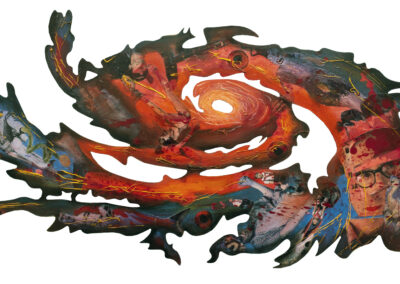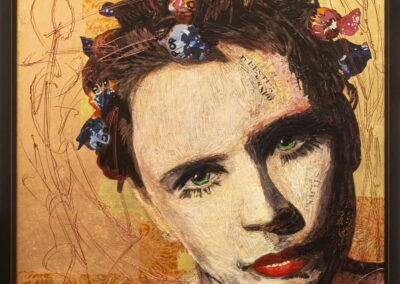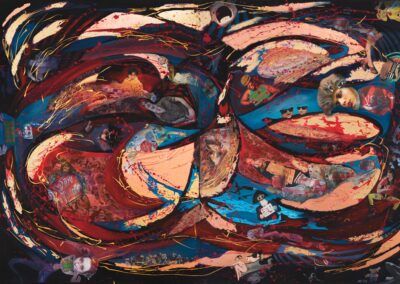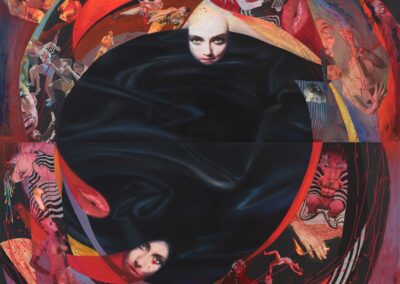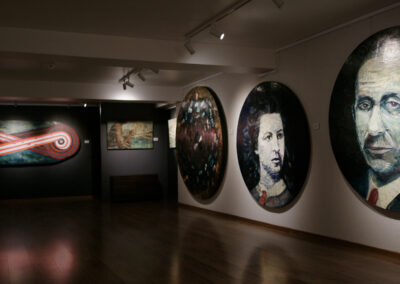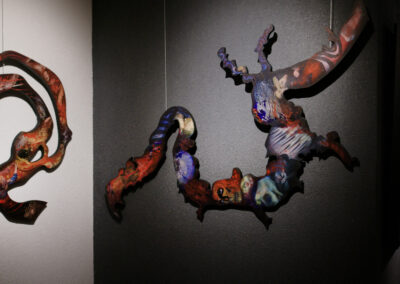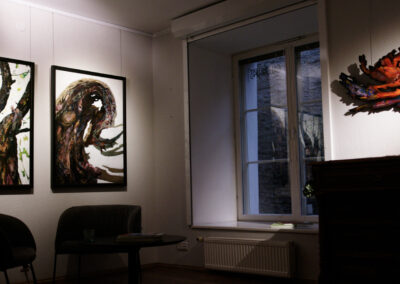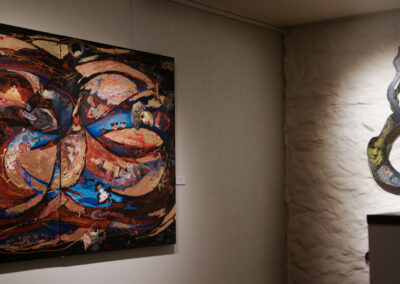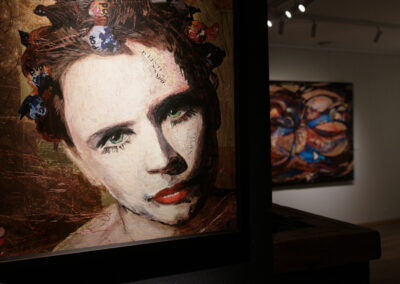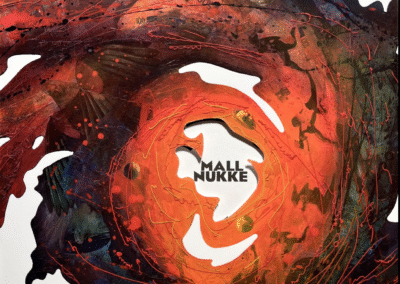„Mall Nukke Collages 2009–2024“
14.11.2024–04.01.2025, Haus Gallery
Haus Gallery is hosting an exhibition dedicated to Mall Nukke’s 60th birthday, presenting her renowned and unique collage work. The exhibition runs across two floors, one hall of which looks at the past of collages, where the works date back more than 10 years, and the other describes the present, presenting works completed this year. Nukke, a classic of modern art who entered our art scene at the beginning of the cult 1990s, is fascinating and socially sensitive both then and now.
Mall Nukke calls herself a collage artist who sometimes paints. Collage is her greatest passion, to which she has now returned, older and wiser. But regardless of whether she is currently picking up a brush or scissors and glue, she takes her very first steps with a pencil. It all starts with drawing, the placement and arrangement of things on the surface, the composition. Just like rhythm works in music. It is like an invisible thread that connects both instrument groups and solo parts, as well as the background and foreground. Mall Nukke’s collage technique, or rather the combination of techniques, is certainly unique and recognizable precisely because of such a rhythm, but not only.
…Marilyn herself also seems to have left her iconicity behind – Mall Nukke will depict her in collage technique again in 2023, but this time not so much as a superstar, but as a flesh-and-blood person under her civil name Norma. Her gaze is no longer seductive, she does not squint, her lips are only barely parted, and her chin is not pushed forward defiantly. The youthful portrait of Elizabeth II, completed in the same year, is just as simple and natural and bears the queen’s nickname Lilibet. Marlene Dietrich has also undergone a transformation, whom Mall Nukke has previously made into both the mythological Venus and the comic Mickey Mouse, but who in 2024 poses in her work without any attributes, as a dignified and self-aware femme fatale. Yes, she still seduces. A certain formal independence and seriousness can also be observed in the case of Lydia Koidula and Anton Hansen Tammsaare, whose heads the artist once pasted around a dollar sign on amusing nude photos, but whom he depicts in 2009 as stoically as we remember them from the kroon era. Wait, did I say kroon? Why do these portraits have euros as the background? The ability to mix and shift semiotic symbols is as indispensable a tool in Mall Nukke’s toolbox as a pencil and brush, scissors and glue – I dare say that over time it has acquired even greater weight. His technique has perhaps become more uniform and flat, but the content is equally deeper and more refined.
In very general terms, it can be said that while Mall Nukke’s collages were previously dominated by colorful petit bourgeois ideals, the world of media and entertainment, and ancient mythologies and today’s archetypes, his themes have become more metaphysical and surreal. They no longer shout in your face or kick open doors, but quietly invite you along with them. Unstoppable and unstoppable time comes to the fore, against which the creation of the world and panicked running around tick by. Mall Nukke can create a convincing scene of both urban romance and eroticism and a rabbit hole that opens between crooked tree roots, which everyone enters at their own risk.
The artist collects and picks up collage material from everywhere – newspapers and magazines from the 1960s onwards, old telephone books and guides, as well as images found on Google, processed in Photoshop and printed out in case the necessary detail cannot be found anywhere immediately. However, one must keep in mind the rules of copyright protection and never use anything one for one. Does it seem like a slippery slope? But that’s what pop art is all about – borrowing, quoting, commenting. But can we still talk about Mall Nukke as a pop artist today? Rather, over the years, he has moved more and more towards his own original style, which defies categorization, just as a proper substructure defies the tension of glue.
Triinu Soikmets, art historian
